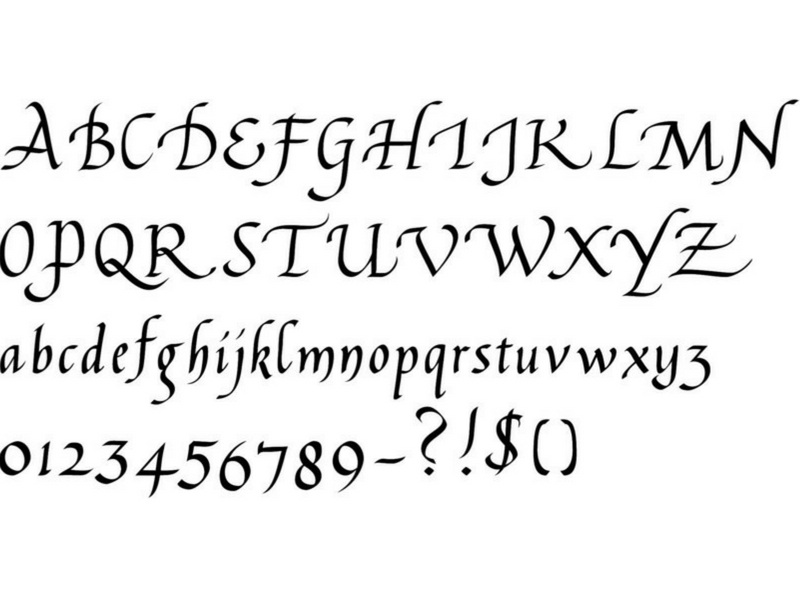 Apr
05
Apr
05
Western calligraphy
- April 5, 2018
- 0 Comment(s)
Western calligraphy is the art of writing and penmanship as practiced in the Western world, especially using the Latin alphabet but also including the calligraphic use of the Cyrillic and Greek alphabets, as opposed to “Eastern” traditions such as Turko-Perso-Arabic, Chinese or Indian calligraphy.
A contemporary definition of calligraphic practice is “the art of giving form to signs in an expressive, harmonious and skillful manner.”The story of writing is one of aesthetic development framed within the technical skills, transmission speed(s) and material limitations of a person, time and place.
A style of writing is described as a script, hand or alphabet.
Calligraphy ranges from functional hand-lettered inscriptions and designs to fine art pieces where the abstract expression of the handwritten mark may or may not supersede the legibility of the letters. Classical calligraphy differs from typography and non-classical hand-lettering, though a calligrapher may create all of these; characters are historically disciplined yet fluid and spontaneous, improvised at the moment of writing.

Calligraphic writing continued to play a role long after the introduction of the printing press in the West, official documents being drawn up in engrossed or handwritten form well into the 18th century. A revival of calligraphy in the later 19th century was associated with the Art Nouveau and Arts and Crafts movements, and it continues to be practiced, typically commissioned for private purposes such as wedding invitations, logo design, memorial documents, etc.
Early Modern era
In the mid-1600s French officials, flooded with documents written in various hands and varied levels of skill, complained that many such documents were beyond their ability to decipher. The Office of the Financier thereupon restricted all legal documents to three hands, namely the Coulee, the Rhonde, (known as Round hand in English) and a Speed Hand sometimes simply called the Bastarda.
While there were many great French masters at the time, the most influential in proposing these hands was Louis Barbedor, who published Les Ecritures Financière Et Italienne Bastarde Dans Leur Naturel circa 1650.
With the destruction of the Camera Apostolica during the sack of Rome (1527), the capital for writing masters moved to Southern France. By 1600, the Italic Cursiva began to be replaced by a technological refinement, the Italic Chancery Circumflessa, which in turn fathered the Rhonde and later English Roundhand.
In England, Ayres and Banson popularized the Round Hand while Snell is noted for his reaction to them, and warnings of restraint and proportionality. Still, Edward Crocker began publishing his copybooks 40 years before the aforementioned.
Related Post: THINGS NAMEPLATE SAYS ABOUT COUPLES
Calligraphy today
Calligraphy today finds diverse applications. These include graphic design, logo design, type design, paintings, scholarship, maps, menus, greeting cards, invitations, legal documents, diplomas, cut stone inscriptions, memorial documents, props and moving images for film and television, business cards, and handmade presentations. Many calligraphers make their livelihood in the addressing of envelopes and invitations for public and private events including wedding stationery. Entry points exist for both children and adults via classes and instruction books.
Source: Wikipedia
